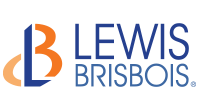Who May Petition for Post-Grant Review Under The AIA?

By: Jeffrey F. Yee
Under the America Invents Act of 2011 (AIA), any “person” other than the patent owner may challenge the patent owner’s patent(s) through post-grant review before the Patent Trial and Appeal Board (PTAB). See, e.g., 35 U.S.C. §§ 311(a) and 321(a); 37 C.F.R. 42.201. The patent statutes do not specifically define the term “person.” The presumption is that the term “person” does not include the federal government and its agencies.
The U.S. Postal Service had argued that the federal government should be within the definition of “person” in the context of post-grant review under the AIA. However, the U.S. Supreme Court disagreed. See Return Mail, Inc. v. U.S. Postal Service, 139 S. Ct. 1853 (2018). In this case, though, the Court did not provide specific guideline as to how a federal entity is defined.
Recently, several Federal Reserve banks1 successfully invalidated patents owned by Bozeman Financial LLC (Bozeman) before the PTAB. PTAB No. CBM2017-00035. Bozeman appealed the PTAB decision to the Federal Circuit Court and challenged the banks’ standing to seek post-grant review, as the banks should be considered federal entities and thus are not “persons” under the AIA. In re Bozeman Financial, __ F.3d __ (Fed. Cir. Apr. 10, 2020).
Bozeman argued that the banks are operating members of the Federal Reserve System, which is a federal agency; moreover, the banks implement the monetary and fiscal policies of the United States and any profit generated by the banks is transferred to the United States Treasury. However, the Federal Circuit Court held that the banks were “persons” for the purpose of the AIA because they were not structured as government agencies, did not receive congressional appropriated funds, did not have officials appointed by the President or other government officials, and cannot promulgate regulations with the force of law. Moreover, the federal government only exercises limited control over the operation of the banks. For those reasons, these banks were within the definition of “person” under the AIA.
Interestingly, the Federal Circuit Court noted that it was “significant” that the banks were subject to patent infringement suit in any court as opposed to only the Court of Federal Claims pursuant to 28 U.S.C. § 1498(a)2, and this fact favored a finding that the banks were separate from the federal government. In a footnote, however, the Federal Circuit Court acknowledged that it had held that a federal reserve bank must be sued in the Court of Federal Claims because the bank’s infringing acts were only for the government. See In re Bozeman Financial, fn. 3.This seems to suggest that federal reserve banks are not categorically excluded from the definition of “person” under the AIA, and in some circumstances, a federal reserve bank might be considered a federal entity. It also remains to be seen whether or not this case may go to the U.S. Supreme Court for further consideration.
For more information on this topic, contact the author of this post. You can also subscribe to this blog to receive notifications when new posts go up.
[FN1] Federal Reserve Bank of Atlanta, Federal Reserve Bank of Boston, Federal Reserve Bank of Chicago, Federal Reserve Bank of Cleveland, Federal Reserve Bank of Dallas, Federal Reserve Bank of Kansas City, Federal Reserve Bank of Minneapolis, Federal Reserve Bank of New York, Federal Reserve Bank of Philadelphia, Federal Reserve Bank of Richmond, Federal Reserve Bank of San Francisco, and Federal Reserve Bank of St. Louis.
[FN2] A patent owner may only sue the federal government for patent infringement in the U.S. Court of Federal Claims pursuant to 28 U.S.C. § 1498(a), as opposed to in a U.S. District Court pursuant to 35 U.S.C. § 271, and the remedies available to the patent owner is limited.
